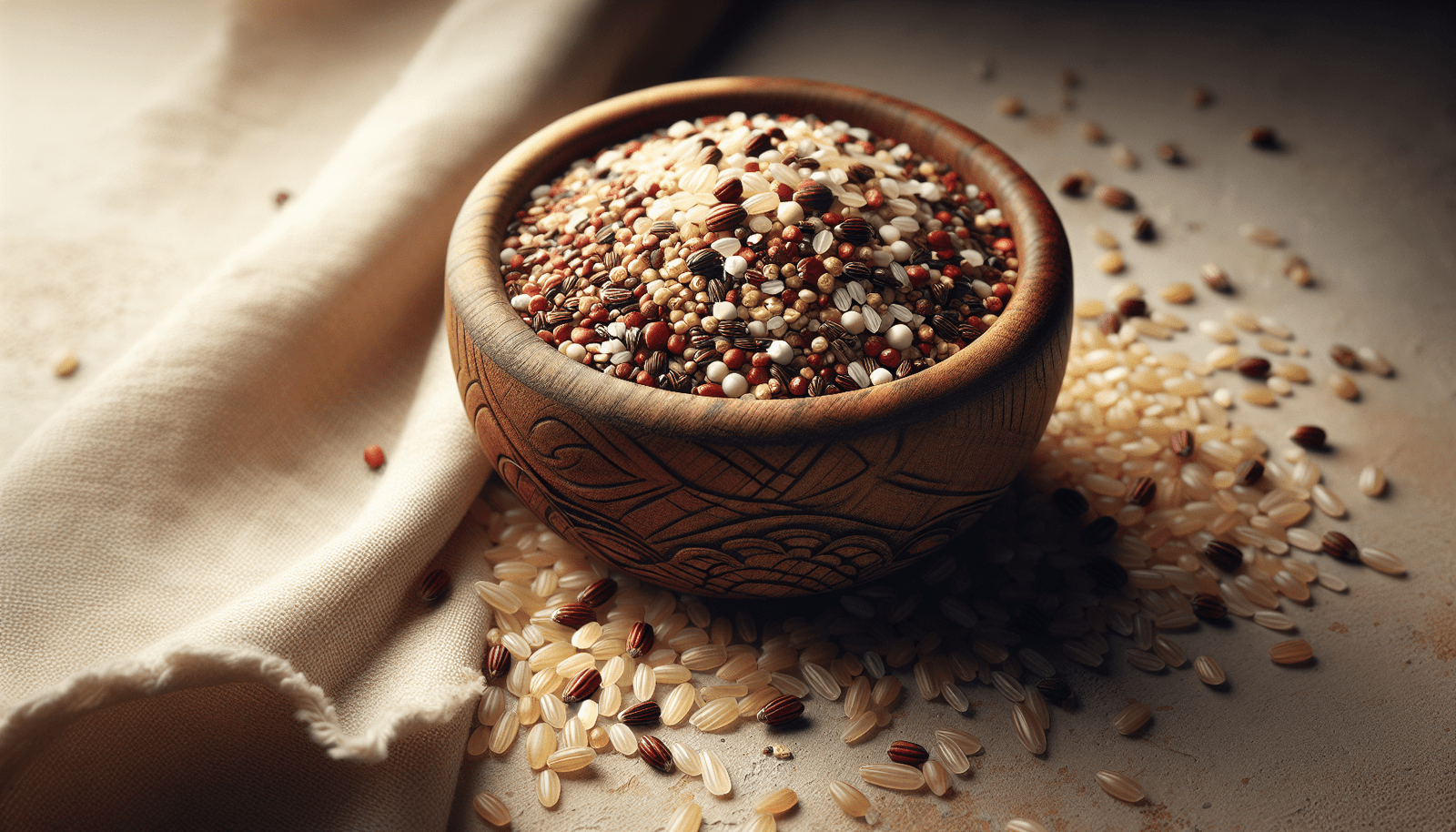Have you been wondering whether grains are appropriate for your little one during baby-led weaning? It’s a common question for parents embarking on this exciting journey of introducing solid foods to their babies. Grains can be a nutritious part of a baby’s diet, but it’s important to approach this with care and consideration. Let’s break down everything you need to know about including grains in your baby’s meals as they start exploring solids.
What is Baby-Led Weaning?
Baby-led weaning is a distinctive approach to introducing solids where you allow your baby to feed themselves from the very beginning. Rather than spoon-feeding purees, you’ll offer finger foods that are suitable for their developing skills. It’s a fun and interactive way for them to learn about different tastes and textures.
Benefits of Baby-Led Weaning
This method offers various benefits, including:
- Developing Motor Skills: Allowing your baby to grasp and self-feed encourages the development of fine motor skills.
- Encouraging Autonomy: Babies can learn to listen to their hunger cues and make choices about what to eat.
- Promoting a Healthy Relationship with Food: With self-feeding, your baby can explore food at their own pace without pressure.
Why Consider Grains in Baby-Led Weaning?
Grains can be an excellent addition to your baby’s diet for several reasons. They provide essential nutrients and energy to support their growth and development. Let’s explore the types of grains available.
Nutritional Benefits of Grains
- Energy: Grains are a great source of carbohydrates, which are fundamental for providing energy.
- Fiber: Whole grains contain higher fiber content, promoting digestive health.
- Vitamins and Minerals: Grains can also deliver important vitamins and minerals like B vitamins, iron, and magnesium.
Types of Grains Suitable for Babies
When it comes to grains, not all are created equal. You’ll want to focus on whole grains since they retain more of their natural nutrients. Here’s a breakdown of some fabulous options:
| Grain | Nutritional Benefits | Tips for Introduction |
|---|---|---|
| Oatmeal | Rich in fiber, iron, and protein. | Serve as porridge or in soft, small clusters. |
| Brown Rice | Good source of magnesium and selenium. | Cook until soft and offer as small grains. |
| Quinoa | Complete protein and high in iron. | Rinse well, cook, and serve plain or mixed. |
| Barley | Contains vitamins B6, E, and fiber. | Cook until soft and mash if needed. |
| Whole Wheat | Provides B vitamins and fiber. | Bake into small pancakes or muffins. |
| Buckwheat | Great source of antioxidants and minerals. | Cook into porridge or mix with fruits. |
Avoiding Processed Grains
While introducing grains, it’s pivotal to avoid highly processed varieties as they may lack essential nutrients. Opt for whole grains that are minimally processed to ensure your baby gets the maximum health benefits.
When to Introduce Grains
You might be curious about the right time to start introducing grains to your baby. Generally, you can begin offering grains around 6 months of age, once your baby has shown readiness for solid foods.
Signs of Readiness
- Sitting Up: Your baby should be able to sit upright with minimal support.
- Interest in Food: They show curiosity by reaching for what you’re eating.
- Gumming/ Chewing Motion: They can move food around in their mouth and mash it with their gums.
Preparing Grains for Your Baby
Preparation is key to making grains suitable for your baby’s consumption. Here are some simple ways to get started.
Cooking Methods
- Boiling or Steaming: This is an easy way to ensure grains are tender.
- Baking: You can bake grains into muffins or pancakes for a new texture.
- Porridges: Cook grains in water or milk to create a smoother, easier-to-eat option.
Important Tips for Serving Grains
- Texture: Ensure the grains are soft enough for easy chewing.
- Small Pieces: Cut or break down grains into bite-sized portions to prevent choking.
- Variety: Introduce a range of grains to expose your baby to different flavors and textures.
Safety Considerations with Grains
While incorporating grains into your baby’s diet, some safety tips will help ensure happy mealtimes.
Choking Hazards
Whole grains can be a choking hazard, so be vigilant about how they’re served. Always ensure that any grain is well-cooked, soft, and appropriately sized.
Allergies
Allergies to grains, particularly wheat, might occur. It’s essential to introduce new foods one at a time, waiting a few days before introducing another. This way, you can monitor your baby for any adverse reactions.
Common Concerns About Grains in Baby-Led Weaning
You may have some concerns regarding the inclusion of grains in your baby’s diet, and that’s completely normal. Here are some of the common questions parents ask.
Will Grains Fill My Baby Up Too Much?
There’s often a worry that offering grains will lead to your baby getting too full, making them uninterested in other essential foods. It’s important to maintain a balanced diet consisting of various foods. Grains should complement fruits, vegetables, proteins, and Healthy fats for the perfect baby-led weaning experience.
Are Gluten-Free Grains Better for My Baby?
Some parents wonder about gluten and whether to opt for gluten-free grains. It ultimately depends on whether your baby has a gluten sensitivity or celiac disease. If you have any family history of gluten-related disorders, it’s wise to consult with your pediatrician before starting gluten-containing grains.
Do I Need to Avoid Certain Grains?
Some grains may contain higher levels of phytic acid, which can hinder nutrient absorption. Soaking or fermenting grains before cooking can help alleviate this issue. If you’re worried, consult your healthcare provider for personalized advice.
Balancing Grains with Other Foods
As you introduce grains, it’s crucial to maintain a well-rounded diet. Think of grains as just one element of your baby’s meals, combined with other nutritious foods.
Meal Ideas Including Grains
Creating meals that incorporate grains can be simple yet delicious. Here are some ideas:
- Oatmeal with Fruit: Cook oats and mix with mashed banana or soft berries.
- Quinoa Salad: Cook quinoa and mix it with finely chopped cucumber and avocado.
- Rice Balls: Cook brown rice, then form into small balls and mix with shredded veggies or chicken.
Snack Ideas
Snacks are essential, too. Try offering:
- Pancakes made from Whole Wheat: Easy to hold and delicious.
- Oven-Baked Quinoa Cakes: Serve with a side of yogurt.
- Rice cakes topped with smashed avocado or peanut butter: Perfect for little fingers.
Conclusion
Including grains during baby-led weaning not only broadens your baby’s flavor horizon but also provides essential nutrients for their growing body. There’s a wonderful world of grains to introduce, and with care and creativity, you can make mealtimes enjoyable and healthy.
You may have questions or uncertainties as you move forward, but that’s perfectly okay. Just remember to take it slow, keep the meals varied, and monitor your baby’s reactions as you introduce new grains. Your little one is about to embark on a flavorful adventure, and you get to guide them through it!

